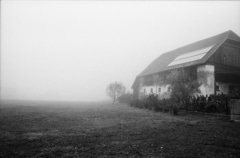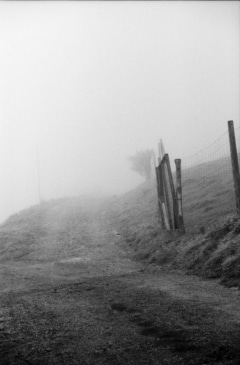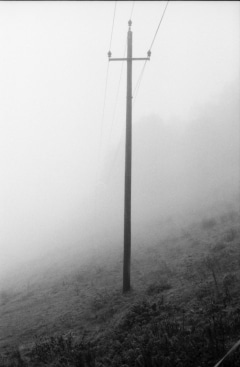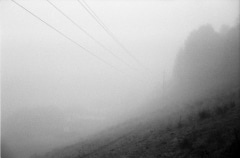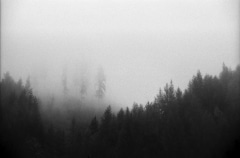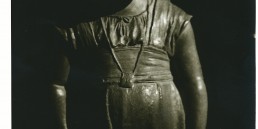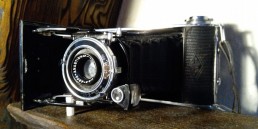One of the challenges for beginners in film photography is shooting foggy landscapes and objects in fog. Contrary to digital, you can’t check the result on a display – everything needs to be done by knowing the special character of fog and mist.
Fog has the wonderful attitude to turn anything into a dreamlike mystery scenario, full of speculation and the big unknown world behind.
shooting fogpicturing the mystery
The following pictures have been done on a Nikon FE2. Film: Rollei Infrared 400 without any filter, developed in Rodinal 1+50 for 22 minutes. The internal lightmeter was corrected with +1 EV.
SOME THINGS YOU SHOULD MIND ABOUTWHEN SHOOTING FOG
Shooting misty landscapes or subjects covered in fog can be tricky. Here are some basics to get your shot done safe and well.
Fog is a strong diffuser
When shooting fog, there’s one thing you should have on mind: Fog is reflecting light. It brightens up the scene. If you’re working with a light meter (no matter if the one of your camera or an external one), you need to correct the exposure time. You can do this by adding +1 to +1,5 EV. The less you correct your EV, the darker the picture will get. The more you correct your EV, the stronger the foggy effect and the lighter the picture will turn out.
Use manual focus
Your auto focus (if you have one) will have a hard time getting the right focus. Better use manual focus.
Use a tripod
For steady shots you should always use a tripod. That’s especially important when you’re doing landscapes, as you might want to have a great depth of field, let’s say shooting on f22 or similar. This will lead to longer exposure times.
Choose a object for your foreground
To a sense of depth, you need to position some object in the foreground. Find something, that gives the audience an idea of proportions and the depth of the scenario.
Check your lense before each shot
Foggy conditions can cause condensation on your lense. Clean it before each shot.
Play with light
Adding some light sources (i.e. street lamps, sun, moon, etc.) add some special character to your scene. Play with it.
Let it flow
By using very slow film (like ISO 20) or ND filters you can get extra long exposure times. This will turn fog into a silky, moving sea. Give it a try! Just have in mind: when using ND filters, you might need to first focus manually, then apply the filter (you won’t see much or even nothing through the filter, depending on it’s density.
KILL YOUR IDOLSIt's your life, your shot, your art.
Be aware of all the above and learn when it makes sense to skip the rules. If your imaginative scenario asks you for something, forget about the rules. It’s your set, your life, your shot, your art. I mean it.
Related Posts
Post
When the darkness is taking over
From happy Barcelona to bombshelled KharkovWhen we started our trip to Barcelona, everything seemed…
Post
Agfa Record: German Charme
AGFA Billy RecordA breeze of 1930'sThis year Ded Moroz, Santa’s cousin from Siberia, sent me…
Post
Whatever happened to Brexit?
The SARS-CoV-2 pandemic is grabbing all our attention. Curfews, economic impact and the run for an…

